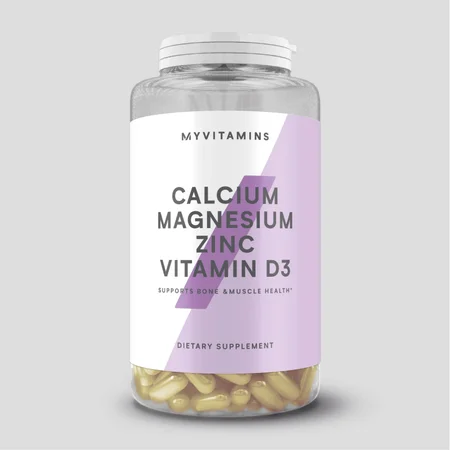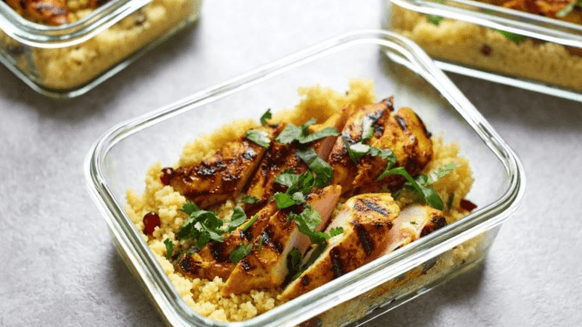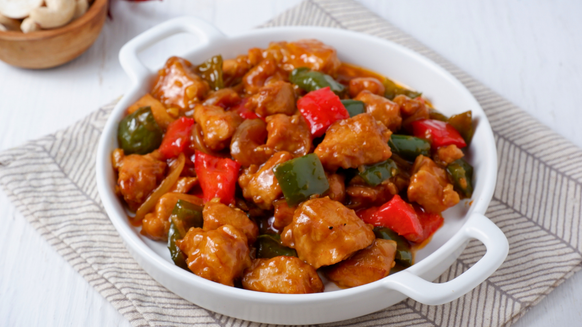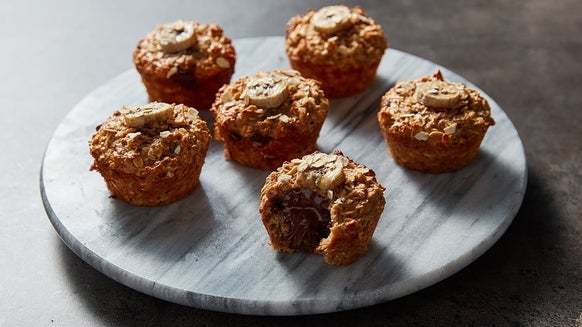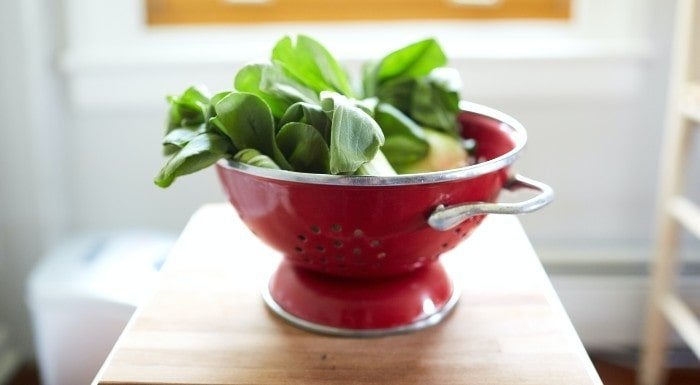
When you’re following a low carb diet, vegetables are often some of your best choices - not only are they low on carbs, but plants are packed full of fibre (to keep you full) and vitamins and minerals to boost your health. They also can be super tasty, inexpensive and easy things to snack on throughout the day.
Read the list below to find the very lowest carbohydrate veggies per 100g.
1. Lettuces
While there are many types of lettuces and greens, they are all high in water content, fibre, and low in carbs. The exact nutrition content varies based on colour and variety, but adding lettuce to any dish - or a salad with any meal - keeps carbs low and helps you stay satisfied while providing key nutrients.
2. Mushrooms
Mushrooms, while they vary a bit by type, can be as low as
Mushrooms can be a great substitute for meat as well, one of the few plants that give the same “umami” flavour that meats have. Mushrooms are high in selenium, vitamin C, and choline. These nutrients have antioxidant properties that can reduce inflammation.1
3. Broccoli
Broccoli is part of the cruciferous vegetable family, and is a popular vegetable that is easy to prepare at home or find when eating out.
Very low in carbs, about
4. Bok Choy
Bok choy is not only low in carbs, but also one of higher-protein content vegetables you can find. Related to broccoli and also packed full of antioxidants. While easy to prepare it raw as part of a salad, bok choy is also delicious cooked and added to soups.
Like broccoli, it is a good source of calcium, Vitamin C, and Vitamin A. It has a high water content and can be very filling.
5. Spinach
While lettuces were highlighted at the top of the list of low carb veggies, spinach deserves its own spot thanks to its powerhouse of nutrients.
In general, the darker green the vegetable, the more nutrient dense it is. Known as a “superfood”, spinach is packed with Vitamin C, magnesium, and potassium, but also iron - which is hard to find in plant-based foods.
6. Chilli peppers
While chili peppers contain vitamins, minerals and fibre that make them a great low carb food, they are also the most common source of capsaicin in the diet.
7. Celery
Celery is so low in carbs that some people refer to it as a “negative calorie” food. While this claim is not necessarily true; the high fibre and water content of celery make it even lower in net carbs.
Like many other vegetables, celery is a good source of vitamin C. Celery is great on its own, with peanut butter for a snack, or chopped in any sort of savoury dish or soup.
8. Artichokes
While they require some chopping and preparation, the “heart”, or interior most-section of an artichoke has a unique flavour and lots of nutrition.
Packed with magnesium, they are beneficial to maintain a healthy heart and known as a “pre-biotic”, which can help support healthy digestion.4
9. Asparagus
With only
10. Courgette
Courgette has become a wildly popular low-carb substitute for things like pasta, with only
Courgette is not only low in carbs but also easy to grow at home and use to bulk up other dishes with extra fibre and water content.
11. Cucumbers
Cucumbers are another high water-content vegetable, up to 90% water.
While technically a fruit (due to their seeds), cucumbers are most often consumed in salads with other vegetables.
If you’re looking to replace some more of your carbs with veggies, try swapping out crackers with cucumber slices for enjoying dips like hummus or guacamole.
12. Cauliflower
Cauliflower seems to be the hottest low-carb vegetable on the market right now.
From pizza crust to pasta, you can use cauliflower as a low carb substitute for many high carb foods. At
A cruciferous vegetable like broccoli, it is packed with antioxidants and may benefits beyond being low in carbs.
13. Brussel Sprouts
Another cruciferous family member, Brussel sprouts should be on your menu far more often than just at Christmas.
They are delicious shredded to add some nutrition to a salad, but take on a sweeter flavour when roasted at high temperatures in the oven. If you’re following a keto diet, add some bacon and enjoy a savoury side dish.
Packed with ALA (alpha-lipoic acid), they have many potential health benefits from preventing oxidative damage to improving risk for diabetes.6
14. Kale
As a dark, leafy, green vegetable, kale is a nutritional powerhouse that is worth highlighting as a great low carb food. While higher than other vegetables on this list, its carb content is still less than
High in Vitamins K, C, and beta carotene, it’s worth learning how to properly prepare kale to include it in your diet. Remove the hard ribs in the centre and massage an acid-based dressing (like vinaigrette or lemon juice) to soften the tough leaves before eating.
15. Tomatoes
Tomatoes are another pseudo vegetable - technically fruits, but nutritionally similar to vegetables with their low carb and high water content (
High in Vitamin C, K, and A, they are also packed with lycopene - a strong antioxidant that’s present in red fruits and veggies.
16. Aubergine
One of the few purple vegetables, aubergine is a squash that is unique from its other green, yellow, and orange cousins.
While not particularly high in a lot of vitamins and minerals, aubergine does contain a lot of fibre and water which makes it a good low carb substitute for pasta in lasagne or parmesan dishes. It is also common in Asian dishes like stir fries, and takes on the flavour of other foods it is prepared with.
When roasted, it can be used in savoury dishes like Baba Ganoush dip.
17. Bell peppers
Chilli peppers were highlighted for their capsaicin content, but bell peppers are the sweeter-tasting cousin of the chilli.
With only
18. Green beans
Another popular vegetable, green beans are low in carbs, affordable, and packed with nutrition.
A good source of calcium and containing some iron, green beans are best chosen and cooked from fresh - canned green beans lose their texture and can be packed with added sodium.
19. Cabbage
While cabbage looks like a head of lettuce, it is actually another member of the cruciferous vegetable family with cauliflower and broccoli. Popular in many dishes when cooked, it can also be simply shredded in a salad.
Fermented as sauerkraut, cabbage is a popular food for improving digestion and is high in vitamin K and low in carbs.
20. Radishes
A root vegetable with a unique pepper-like flavour, radishes are packed with vitamins, minerals, and antioxidant compounds.
They contain less than
Take Home Message
When you’re cutting carbs, make sure to include a wide variety of vegetables in your diet to consume all of the necessary vitamins and minerals. Not only are these foods very low in carbs, they can be prepared in many delicious ways and are packed with fibre and water to make you feel full and satisfied. These powerful plant-based foods have promising health benefits, too.
READ THESE NEXT:

Claire is a Registered Dietitian through the Academy of Nutrition and Dietetics and a board-certified Health and Wellness Coach through the International Consortium for Health and Wellness Coaching. She has a Bachelor of Science in Biology and a Master’s degree in Clinical Dietetics and Nutrition from the University of Pittsburgh.
Talking and writing about food and fitness is at the heart of Claire’s ethos as she loves to use her experience to help others meet their health and wellness goals.
Claire is also a certified indoor cycling instructor and loves the mental and physical boost she gets from regular runs and yoga classes. When she’s not keeping fit herself, she’s cheering on her hometown’s sports teams in Pittsburgh, or cooking for her family in the kitchen.
Find out more about Claire’s experience here.
- Calvo, M. S., Mehrotra, A., Beelman, R. B., Nadkarni, G., Wang, L., Cai, W., Goh, B. C., Kalaras, M. D., & Uribarri, J. (2016). “A Retrospective Study in Adults with Metabolic Syndrome: Diabetic Risk Factor Response to Daily Consumption of Agaricus Bisporus” (White Button Mushrooms). Plant foods for human nutrition (Dordrecht, Netherlands), 71(3), 245–251.
- Yagishita, Y., Fahey, J. W., Dinkova-Kostova, A. T., & Kensler, T. W. (2019). “Broccoli or Sulforaphane: Is It the Source or Dose That Matters?”. Molecules (Basel, Switzerland), 24(19), 3593. https://doi.org/10.3390/molecules24193593
- Weber LV, Al-Refae K, Wölk G, Bonatz G, Altmüller J, Becker C, Gisselmann G, Hatt H. “Expression and functionality of TRPV1 in breast cancer cells.” Breast Cancer (Dove Med Press). 2016;8:243-252
- Ben Salem, M., Affes, H., Ksouda, K., Dhouibi, R., Sahnoun, Z., Hammami, S., & Zeghal, K. M. (2015). “Pharmacological Studies of Artichoke Leaf Extract and Their Health Benefits.” Plant foods for human nutrition (Dordrecht, Netherlands), 70(4), 441–453.
- Lim, S. Y., Kim, E. J., Kim, A., Lee, H. J., Choi, H. J., & Yang, S. J. (2016). “Nutritional Factors Affecting Mental Health.” Clinical nutrition research, 5(3), 143–152. https://doi.org/10.7762/cnr.2016.5.3.143
- Altunina, N. V., Lizogub, V. G., & Bondarchuk, O. M. (2020). “Alpha-Lipoic Acid as a Means of Influence on Systemic Inflammation in Type 2 Diabetes Mellitus Patients with Prior Myocardial Infarction.” Journal of medicine and life, 13(1), 32–36. https://doi.org/10.25122/jml-2020-0018
- Kim, L., Lim, Y., Park, S. Y., Kim, Y. J., Kwon, O., Lee, J. H., Shin, J. H., Yang, Y. K., & Kim, J. Y. (2018). “A comparative study of the antithrombotic effect through activated endothelium of garlic powder and tomato extracts using a rodent model of collagen and epinephrine induced thrombosis.” Food science and biotechnology, 27(5), 1513–1518.
